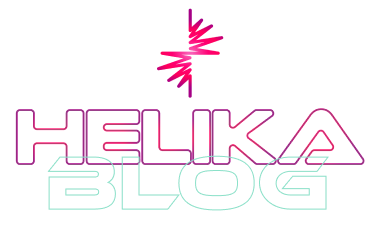In-game analytics have forever been key to games’ successes. They enable game studios to monitor player behavior, allowing them to uncover insights that help inform game development and live ops, increase player retention, and optimize monetization.
Web3 introduces a new layer to the existing data needs – on-chain actions. Players now interact with games in ways that add to the Customer Lifetime Value but take place outside the main app. For instance, players may buy and stake NFTs, provide liquidity, or find a game through an airdrop they received.
Game studios can make use of innovative web3-enabled channels through activations like Play-to-Airdrop campaigns, NFT mints, and tradable UGC assets to acquire users and open up new monetization forms.
Bridging this gap, Helika offers a streamlined solution tailored towards web3 game studios, merging traditional off-chain analytics with on-chain player data. This empowers teams to identify new web3-enabled player archetypes and use web3 elements to their full potential.
In-game Analytics
Helika covers all your standard “web2” data requirements in addition to onchain actions:
-
- DAU, WAU, MAU, WAU/MAU (Stickiness)
-
- Session length
-
- Cumulative Playtime
-
- Sessions per day
-
- Game per session
-
- D1 – D30 retention
-
- FTUE Funnel
-
- Player Geographics
-
- Player Activity per hour
-
- ARPDAU, ARPPU, etc.
- ARPDAU, ARPPU, etc.
Even though web2 focused, these analytics already provide you with insights for your web3 strategy. For example, you can identify peak times for your game and host game nights in Discord when most of your player base is active. Or if your multiplayer title suffers from a low player count distributed throughout the day, you may want to host rewarded playtesting sessions 2 times a day to bundle player activity.
The FTUE funnel below shows you how big of a hurdle the web3 wallet really is in onboarding. Not happy with the conversion rates? Maybe move the wallet setup further down the funnel after users already played a game or make the process easier for them via account abstraction.
As app stores (have to) open up to alternative stores and payment methods, you should also keep an eye on the revenue by platform to see whether players can be successfully moved from app stores to your own web store with lower fees.
The Big Unlock: Merging Web3 Data Analytics with In-game DataCus
Uncover new player archetypes
Web3 opens the space for new player archetypes who are potentially more financially motivated. By combining off-chain with on-chain data, you can learn more about their behavior. It also helps identify how web3 activity relates to existing behavioral patterns and affects your game’s monetization.
-
- Is there cannibalization (former IAP spenders become NFT buyers and stop buying IAPs)?
-
- Do NFTs provide additional spending depth (IAP spenders additionally buy NFTs)?
-
- Are NFT speculators and IAP spenders unrelated archetypes?
One helpful graph is the ‘ARPPU by holder segment’ which shows how NFT holders monetize via IAPs. High ARPPU of NFT-holding players (e.g. whales) signals value-additive monetization while low ARPPU may be a sign of cannibalization.
‘Daily active users by holder segment’ indicates whether NFT holding has an effect on in-game activity, positive or negative. While a positive correlation illustrates a flywheel between the game and its web3 elements, a negative relationship may reveal NFT holders as rent seekers, not actual players.
Track the complete player journey
Web3 provides players with more touch points where they can interact with games. Only by combining offchain and onchain data can teams map the whole player journey.
-
- Do NFT holders turn into players or is it the other way around?
-
- Do players after they churn continue holding NFTs?
-
- Are NFT holders more likely to return after they churned?
These observations can inform the UA and monetization strategy.
Example
Turning potential players into NFT holders first has proven to be an effective tool for onboarding them as active players. Especially holders of 5 or more NFTs show a statistically significant uptick in their conversion rate and retention rate. Therefore, the team decides to build an in-game mechanic that incentivizes players to hold 5 or more NFTs.
Optimize the performance of your web3 activities
By tracking players holistically offchain and onchain, you can also evaluate how to effectively make use of web3. For instance, you can map high spenders to onchain behavior patterns and use that to identify target groups for your web3 campaigns.
Are your high spenders part of a certain community? Reach the rest of that community via an exclusive in-game event that rewards them with a special prize, such as a limited NFT skin related to the community.
Marrying Onchain and Offchain Data for Web3 In-game Analytics
In Web3, combining traditional game data with on-chain analytics is key to success. Helika’s in-game analytics merge the two worlds together, allowing game studios to get a holistic view of its players and NFT holders. Teams can uncover new insights to optimize their game features, UA, and monetization.
Game studios can now make use of Helika’s product suite to track in-game data in both Unity and Unreal, and map it onto blockchain data. The Helika team creates custom dashboards so you can monitor the data that matters to you.





